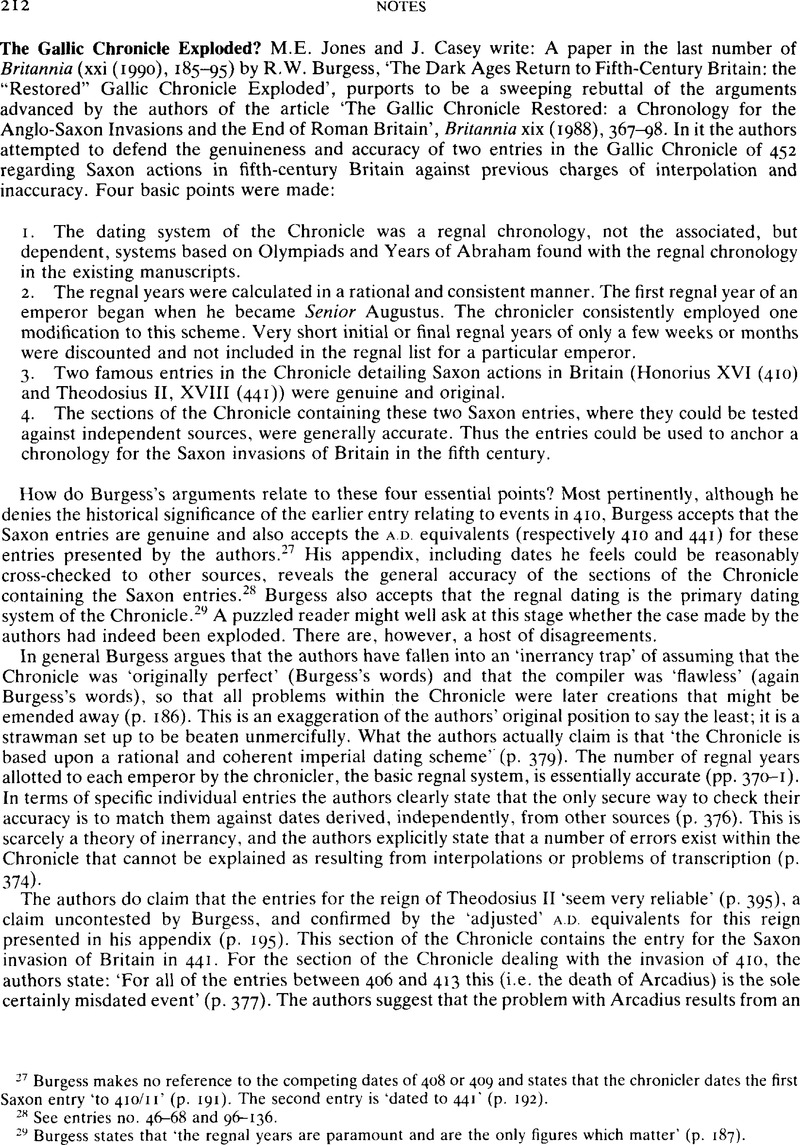Published online by Cambridge University Press: 09 November 2011

27 Burgess makes no reference to the competing dates of 408 or 409 and states that the chronicler dates the first Saxon entry ‘to 410/11’ (p. 191). The second entry is ‘dated to 441’ (p. 192).
28 See entries no. 46-68 and 96-136.
29 Burgess states that ‘the regnal years are paramount and are the only figures which matter’ (p. 187).
30 The strongest generalized statement made by the authors concerning the Chronicle was that it was ‘generally reliable both in chronology and content’ (p. 379).
31 BL Additional MS 16974.
32 B. states: ‘The other two (i.e. Olympiad and Abraham years) were completely useless to any fifth-century chronicler since they meant absolutely nothing and were merely notional summaries dutifully continued from the Chronici canones’ (p. 187). He makes a crucial concession in respect to the origin of these dates and the joining together of the Chronicle of 452, Jerome's Chronicle, the Chronicle of Marius of Avenches and the Chronicle of Isidore of Seville. He admits that the attribution of the Chronicle to Prosper of Aquitaine is an interpolation (p. 190). See Jones and Casey, 375 ff., for the significance of this and related interpolations.
33 Burgess p. 194, entry 82.
34 Bartholomew, P., ‘Fourth-century Saxons’, Britannia xv (1984), 169–85CrossRefGoogle Scholar.
35 For a recent discussion see J.C. Mann, ‘The historical development of the Saxon Shore’, in V.A. Maxfield (ed.), The Saxon Shore (1989), 1-11.
36 Zosimus Historia Nova 6.5; Jones and Casey, 383ff.
37 Burgess, p. 189. He also denies that the death of Theodosius created two co-equal senior rulers, Arcadius and Honorius. This might be contested in the light of Claudian's panegyric for Honorius's fourth consulship where Theodosius is described as ‘Laetior augurio genitor natisque superbus iam partibus duplici fultus consorte redibat splendebatque pio complexus pignora curru’ (‘Gladdened by that augury and proud of his now equal sons the sire (i.e. Theodosius), upstayed on the two princes and lovingly embracing his children in glittering car.’) (Claudian 203-5). Claudian, as court poet, is surely reflecting here, and elsewhere, the position of Honorius as promulgated by Stilicho.